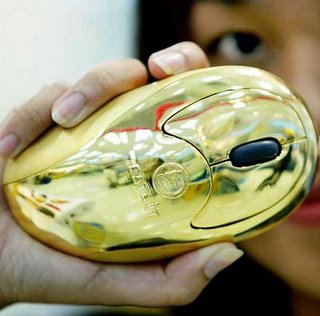Place your mouse

1. Place your mouse close to your keyboard and within easy reach.
Placing your mouse too far away can cause your shoulders muscles to tire from constantly supporting your outstretched arm, leading to neck and shoulder pain. Keeping it close to your keyboard means you won't have to overstretch when reaching for the mouse.
2. Keep your mouse close to your keyboard.
Placing your mouse on a desk if your keyboard is on a tray can cause you to overreach, and result in shoulder or neck pain. You should be able to use your mouse comfortably with your arms close to your side, and your elbows at a slightly "open" angle.
3. Consider a mouse tray to help keep your mouse near your keyboard.
Your mouse should be close to your keyboard, and both should be comfortably placed. If you are using a keyboard tray, the best position for your mouse is on an adjustable tray that slides over the numeric keypad of your keyboard, putting your mouse about 2 inches above your keyboard (known as a mouse bridge). If your keyboard tray has a tiltable mouse tray to the side, then try angling it down slightly to improve your wrist posture. Try to avoid using a mouse to the side of the keyboard on a flat, lowered tray, because this puts your hand in greater wrist extension.
4. Adjust your mouse/trackball's software controls.
Many people don't realize that the way their mouse functions can be controlled through software. You can adjust the speed at which your mouse moves, the time required between double-clicks, and the size of the cursor. If you're constantly having to backtrack because you shot past the "close window" button, try slowing your mouse down.
5. Consider using a different input device to reduce repetitive arm motions.
Trackballs decrease the distance your shoulder has to travel, which may help reduce movement-related pain. (However, they can also put more strain on the fingers and hands.) Some mouse designs work like a joystick and may help. You can also use a touch pad, a pen and tablet, or a foot-operated mouse. Try a variety of devices, and use the one that feels most comfortable. 6. Make sure you're using the right size pointing device.
People often don't realize that mice may come in different sizes. Make sure that the mouse fits comfortable in your hand; if it's too large, you may want to find a smaller mouse. There are even adjustable-size mice.



0 Comments:
Post a Comment
<< Home